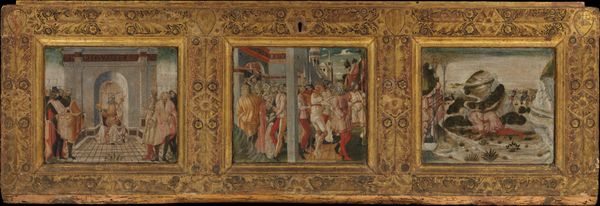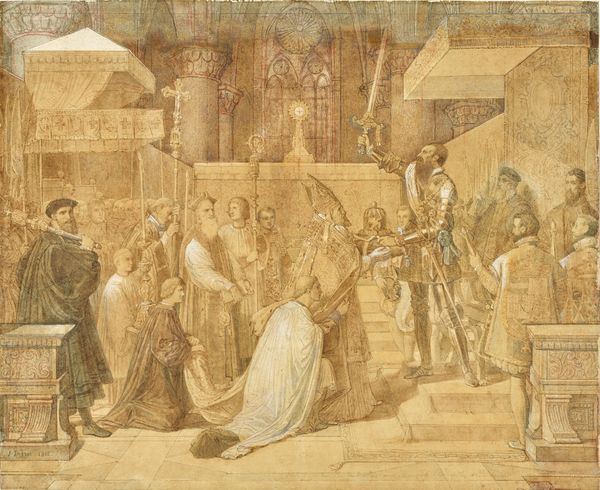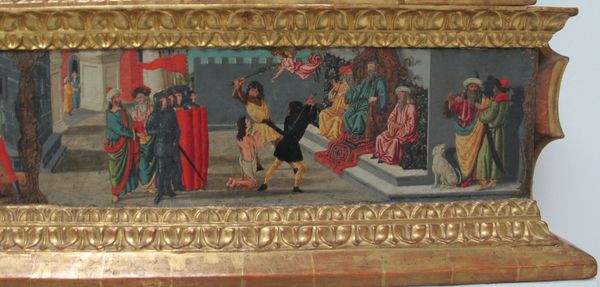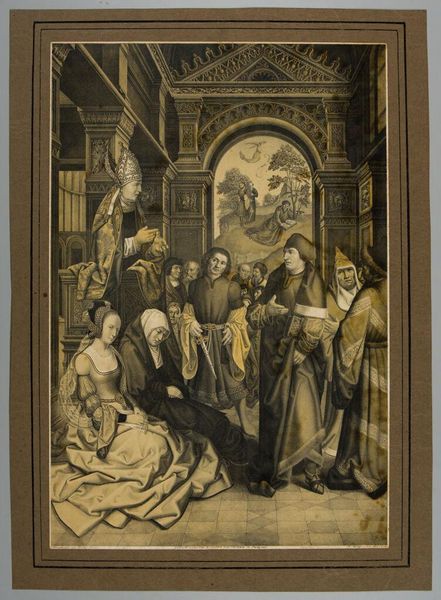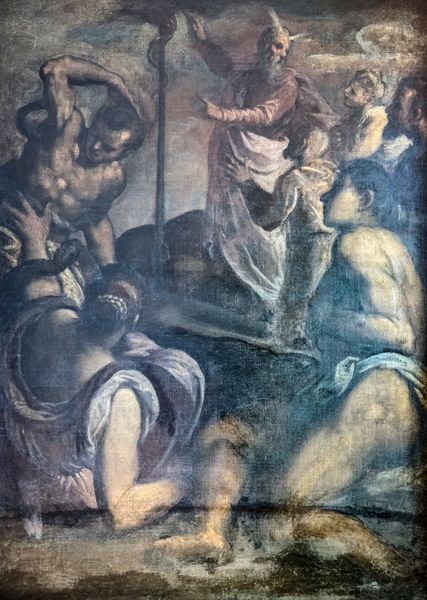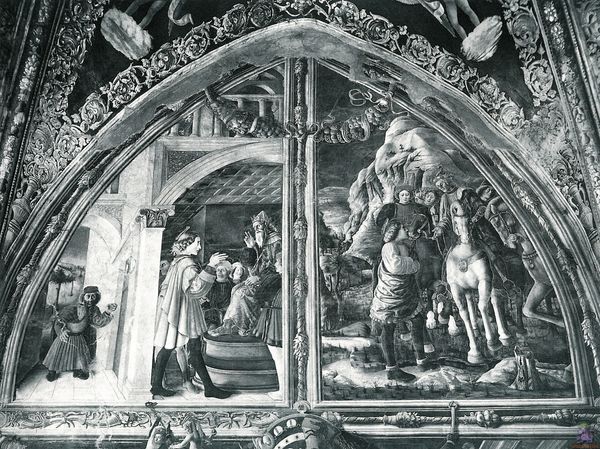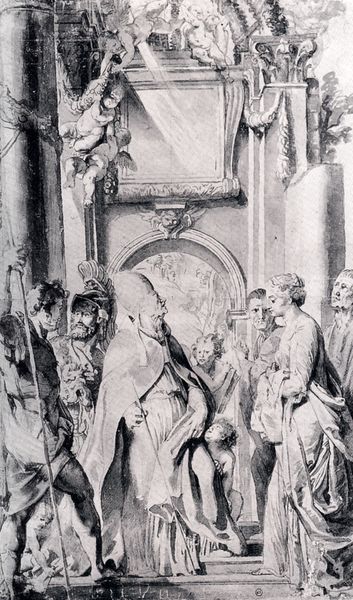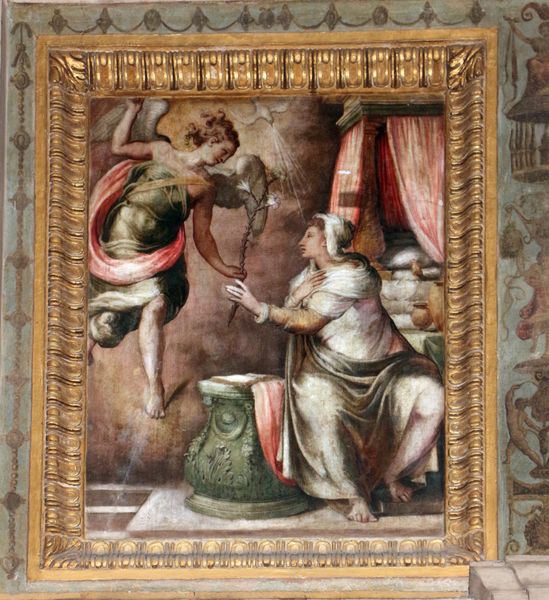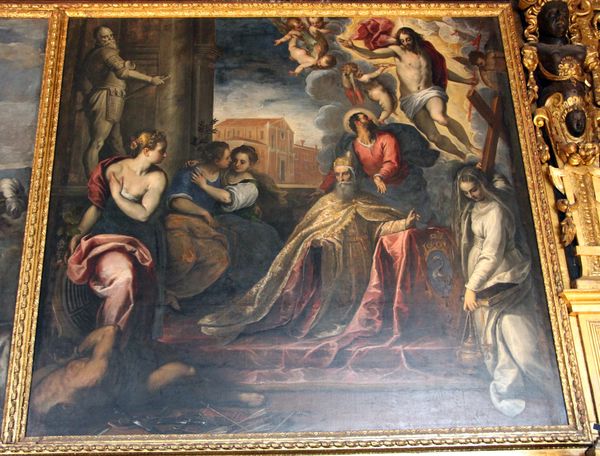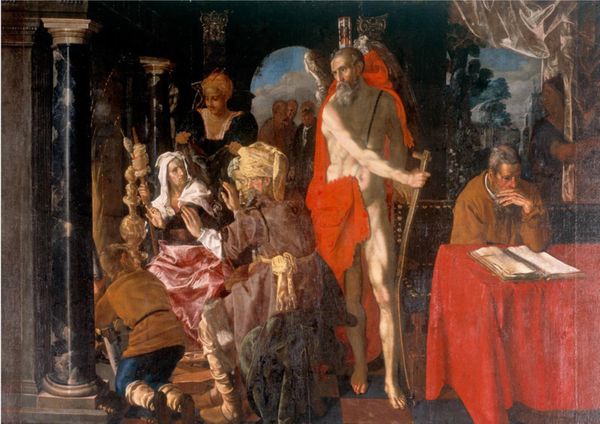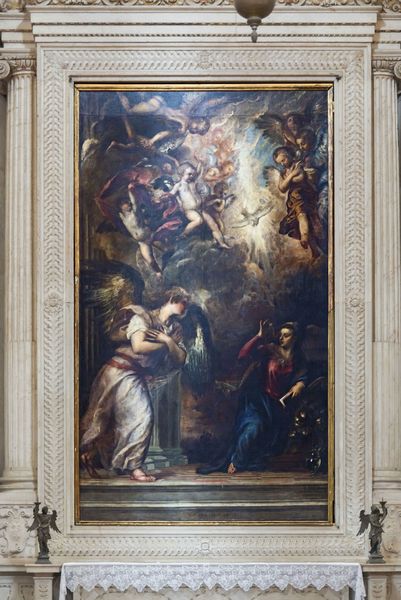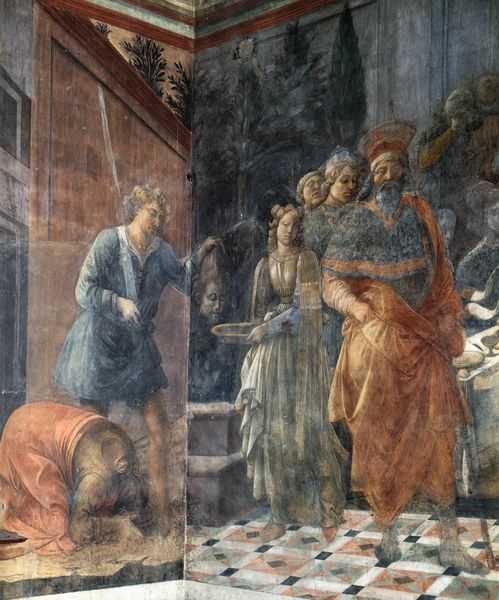
oil-paint
#
oil-paint
#
mannerism
#
figuration
#
oil painting
#
painterly
#
history-painting
Copyright: Public domain
Editor: This oil painting, "Purification of the Virgin" by Francesco Salviati, from 1563, feels oddly unsettling, like a theatrical performance. What's going on in terms of the broader cultural context, and what are your initial impressions? Curator: It's quintessential Mannerism, pushing elegance and stylization, reflecting an aristocratic patronage system with distinct societal and political influences. These patrons actively shaped the artist's expression, in addition to influencing how and where art was seen, from private chapels to powerful family homes. The elaborate composition seems staged, yes, which was intentional to meet elite taste. Notice how the artist makes ample use of visual complexity with distorted spatial relations, imbalanced forms and unconventional use of perspective, rather than naturalism or simple aesthetics? It departs from High Renaissance classicism. Editor: That’s fascinating. Was the Church also a powerful stakeholder when determining art aesthetics during this time? Curator: Precisely. The mid-16th century saw significant religious and political upheaval in Europe. The Reformation challenged papal authority. Catholic patronage intensified, aiming to reassert religious power and moral authority. Artists began employing certain artistic elements within this setting. Consider the theatrical and emotional expressiveness within Counter-Reformation ideals and goals in this artwork: how might this have resonated with audiences? Editor: The Virgin is being "purified." I see this connection now to religious reform during this era. Are you saying Mannerism was adopted and used as a tool of religious reform, not purely for personal or courtly display? Curator: Indeed! The public role of art during this era cannot be understated. As we move through art history, one thing is very apparent: that patronage politics, stylistic trends, religious conflicts and social currents always affect an artist's work. Editor: This completely changes my interpretation of it; now I recognize it as more than elegant styling. Thank you! Curator: It has been a pleasure, indeed! Seeing beyond immediate style allows deeper insight.
Comments
No comments
Be the first to comment and join the conversation on the ultimate creative platform.
